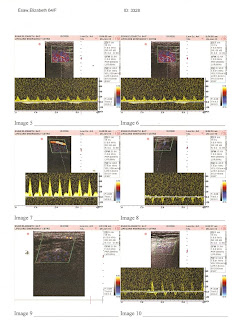Takayasu Arteritis: A Battle Rekindled
Liz, my better half, had lived a normal life since being diagnosed with Takayasu Arteritis—the so-called “pulseless disease”—in 2003. Over two decades, she battled the disease with remarkable resilience and determination. Life was stable until a year ago when troubling signs emerged.
The initial sign of trouble appeared as large, blister-like sores on her right leg, the same leg where she’d lost toes. Soon after, signs of discolouration appeared on her left leg. Alarmed, I consulted our family doctor, who prescribed a course of antibiotics and ordered blood tests to rule out further complications. The treatment seemed to help, but deep down, I sensed something was still amiss.
Liz, ever stoic, insisted she was fine. However, being her husband and a perceptive observer, I noticed subtle shifts in her behaviour. She was losing her calm; quiet desperation was growing. It became clear she was grappling with more than just physical discomfort.
In India, many seek soothsayers and spiritual leaders, driven by anticipating miracles. Seeking solace, Liz turned to their assurances. While these moments offered her fleeting hope, I knew the disease’s resurgence was a more likely explanation for her worsening symptoms.
Takayasu Arteritis is a relentless foe. The disease, while eradicated by treatment from 2003 onwards, was, in fact, dormant. It was as if the December cold jolted it awake. I would often find Liz rubbing her legs at night, unable to find relief. The disease, silent for seven long years, had returned with a vengeance.
The reasons for this resurgence remain unclear. Was it triggered by the cold? The natural progression of ageing? Or had Liz stopped her medication at some point? Whatever the cause, the path forward was grim. Liz, who avoids hospitals passionately, had no choice but to undergo a series of medical investigations.
Our family doctor, Dr. Sharma, referred us to Life Care Hospital in Ahmedabad. Liz travelled ahead of me on January 16th to meet our daughter Jennifer, who had just returned from Shillong. I joined them two days later to celebrate Keith’s birthday, though the looming shadow of her health made celebrations difficult.
At the hospital, they performed a Doppler test on Liz’s leg. The results confirmed our worst fears. Dr Samir Dhani, a specialist recommended to us, broke the devastating news: the capillaries supplying blood to Liz’s right foot had deteriorated beyond repair. The only option was amputation.
Hearing those words felt like a blow to my chest. How could I prepare Liz for such a life-altering decision? How could I shatter her fragile hope with this heartbreaking truth?
Liz had faced Takayasu Arteritis for years with remarkable courage, but this was a battle unlike any other.. As I stood outside her hospital room, grappling with the weight of this revelation, I knew our journey was far from over.
The Doppler test conducted on 16 Jan 2010
The Doppler reports made out by Dr.Darshan
Prognosis of Dr.Sameer Dani
I rang Dr Dushyant on the 18th of Jan and set up an appointment for her admission to Life Care Hospital. I had appraised Liz on her condition and said she needed hospitalization. She went into depression and began to sob. She did not want her leg amputated. I assured her no one would amputate her leg without her consent. I told her they would run some exclusive tests on her to determine the condition of her leg and her overall state.
They admitted Liz to the hospital on January 20th. She remained there for a week, being pumped with IV medicine day and night and having numerous blood tests performed on her. A team of experts came to see her to assess her condition. It had been a long and exhausting week for everyone present. She did not experience the excruciating agony she had been experiencing previously when on medicine. On the 26th, she was given another Doppler test to evaluate if her foot had improved after all the medicine she had received.
While she was in the hospital, I gently informed her that it would be best if she prepared herself for an amputation. I called her mentor, Dr. Anandan in Chennai, and asked him to help her see the light. I enlisted the help of my other friends and her older daughter to psychologically prepare her for the trauma. She was sick of being in the hospital and wanted to go home. I prepared her discharge papers and planned to take her home, but before I did, I left I spoke with Dr. Dushyant and informed him that I would be back soon with her for the amputation since there was no other option than for her to suffer through the agony of dry gangrene.
Her Doppler, done the day before her discharge on the 26th, revealed just a little improvement over the previous Doppler test. I knew it was curtains for her right leg and that it would only be a matter of time before Liz realised it would be better to get rid of it than to live through the excruciating agony that the pain would cause her.

































